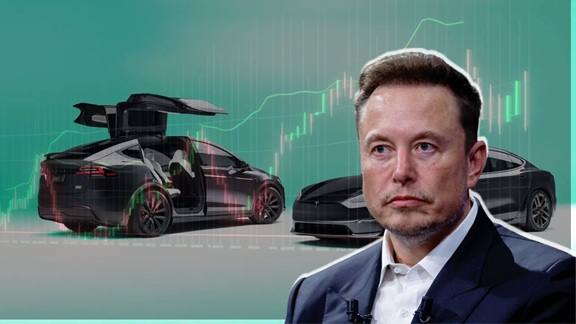Tesla reign in Sweden may be crumbling. Once a top performer in the country, Tesla is now seeing an alarming collapse in sales—dropping by a staggering 80% year-over-year in April 2025. What happened to one of the world’s most recognized EV brands? Let’s break it down.

In 2024, Tesla had a strong run in Sweden, despite ongoing tensions with local labor unions. On average, the company delivered 1,825 vehicles per month—a remarkable achievement given the pushback it faced for resisting a Swedish service worker unionization effort. Fast forward to 2025, and the picture has drastically changed. Tesla is now delivering an average of just 533 vehicles per month, a 71% decrease from the previous year. In April alone, registrations dropped to a shocking 203 units, even with fresh stock of the new Model Y AWD available for immediate delivery.
This dramatic plunge isn’t just about cars—it’s about people and perception. Unlike last year’s union dispute, the current boycott runs deeper and is more widespread. Many Swedish consumers are reacting strongly to the political actions and public statements of Tesla CEO Elon Musk, whose controversial views have drawn criticism across Europe.
As a result, Tesla is facing not just a drop in demand, but a crisis of brand trust. Even with efforts like lower interest rates to boost sales, the company is struggling to win back public favor.
Tesla still has a significant inventory of the old Model Y, even though production of that version ended more than two months ago. While the newer Model Y AWD is available, it hasn’t been enough to pull demand back up.
Next month, Tesla plans to launch the Model Y RWD in Sweden. But that may not be the savior it hopes for. Why? Because in a country where snow, ice, and rugged conditions are common, all-wheel drive (AWD) dominates the market. Rear-wheel drive (RWD) simply isn’t appealing to most Swedish drivers.
Jobs and Infrastructure
With sales dipping below 300 vehicles per month, Tesla’s current sales volume may no longer justify its existing staffing levels in Sweden. If this trend continues, the company could be forced to lay off sales advisors and delivery staff—a painful move but one that may become inevitable. Sweden might just be the tip of the iceberg. Tesla’s issues in one of Europe’s most EV-friendly countries could signal larger problems ahead across the continent.
If sales don’t recover by the third quarter of 2025—when all trims of the new Model Y should be widely available—Tesla risks losing its foothold in Europe altogether. Once seen as the market leader in electric vehicles, Tesla could soon be reduced to a niche player, overshadowed by rising competitors and changing consumer attitudes.
To recover, Tesla needs more than just new models and discounts. It needs to:
- Rebuild its brand reputation in European markets.
- Address public concerns over Elon Musk’s behavior and public image.
- Invest in better local engagement, including fair labor practices.
- Adapt offerings to suit local driving needs—like prioritizing AWD in colder climates.
Tesla still has some of the most advanced EV tech and a loyal fan base. But even that won’t be enough if people no longer feel proud to drive one.
Tesla’s 80% sales drop in Sweden is more than a number—it’s a warning. In just one year, the company has gone from being a market hero to facing consumer rejection and declining relevance. And it’s not just about the product. It’s about how a company behaves, communicates, and listens to the people it serves. Q3 of 2025 will be a critical turning point. If Tesla can’t turn the tide, the automaker that once defined the electric future might find itself watching from the sidelines as new players take the lead.
Related Post
